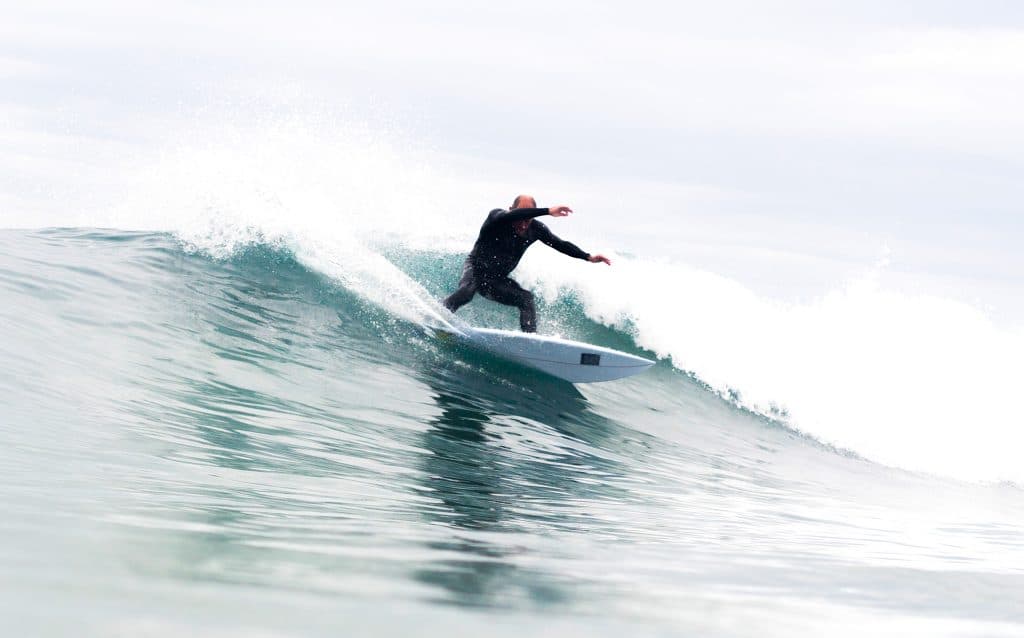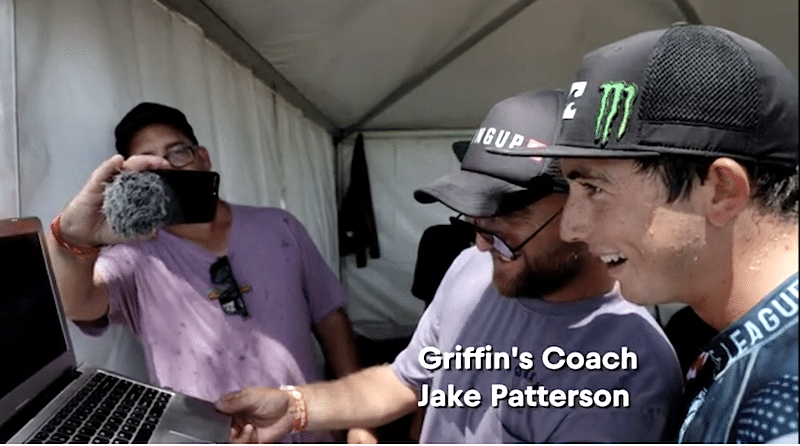It's time to recognise Dane Reynolds' greatest achievement…
I once put the The Diamond Sea by Sonic Youth on the jukebox at a Huntington Beach dive bar.It was an experiment — one that in retrospect I regret and should have been thrown out for, but it got results.
You see, the song begins enjoyably enough — one of the closest things you can find to a ballad in the Sonic Youth catalog, but at the five-minute mark the song launches into an abrasive distortion pedal-led sonic voyage of fifteen-plus minutes that one really needs to be in the right headspace to appreciate (the single version of the song is shortened to five minutes, which is the one the bar probably wishes it had on the jukebox).
By the twelve-minute mark I was nearly assassinated by the bartender and a few irate pool players. I didn’t disagree with them. I shoulda known. But the experiment was a success. It filtered out the possibility of there being any imposter Sonic Youth fans in the bar.
It was an experiment in authenticity. And it worked. Turns out there was only one Sonic Youth fan there, and I was him.
That is what showing Marine Layer to your friends was like. There was the wonderful shredding but there was also the often odd, deep cut tunes and the herky-jerky unpredictable posting nature.
Sometimes it was 2:24 seconds of stream of conscious surfing. Then it was a music video and some Dane prose and then it was some film photos of Courtney and Craig and then back to the vids and then, occasionally, it was a magnum opus casually dropped on Vimeo. Vids like “rejects,” and “excerpt” and “discharge” and “sampler” and “charmed life.” The singles! The whole site was an avant-garde exploration into surf and art and how you interpreted it said a lot about your cultural positioning in surfing.
Today we are officially acknowledging that Marine Layer as we know it is gone. Media Temple has taken it back — and while you can still kinda find remnants of photos and archive pages floating around, the masterpiece as a whole is gone.
And while this isn’t breaking news or anything, it’s time to celebrate and mourn the loss of the domain that truly allowed us to have real, insider trading surf conversations together. To anxiously await when “Dane’s new edit” was coming. Because those days are gone.
“It’s served its purpose,” his principal filmer Jason “Mini” Blanchard said. And boy did it.
In the early days, Dane posted a YouTube clip of the short film Clown by Richard Balducci scored to the song Chinatown by Wild Nothing for no good reason. That’s when I knew we were in for something different. Something intimate and insider.
You would need a translator to show it to a non-surfer. And it was done in a way all his own. It wasn’t polished or edited or dumbed down to be accessible. It was like a Sonic Youth record in that way. Awkwardly abrasive for the philistine, poetry in motion for the core.
You would need a translator to show it to a non-surfer. And it was done in a way all his own. It wasn’t polished or edited or dumbed down to be accessible. It was like a Sonic Youth record in that way. Awkwardly abrasive for the philistine, poetry in motion for the core.
Dane takes a lot of shit for being an underachiever. For giving us “blue balls.” For teasing us for much of his career — never hoisting a trophy or trying or whatever.
it’s time we recognize his greatest achievement: Marine Layer. And that is no dig. I’m here throwing flowers. It will live as an epic time in surfing. It is the most intimate and thorough document of a radical surf career we’ve ever had or ever will.
But it’s time we recognize his greatest achievement: Marine Layer. And that is no dig. I’m here throwing flowers. It will live as an epic time in surfing. It is the most intimate and thorough document of a radical surf career we’ve ever had or ever will.
And it was made extra special because Dane was so damn good at surfing. It woulda been good without that because he was a great curator as well, but it was made great because of that.
And what’s better, Marine Layer was never bound by brand (even in the Quik days) or bullshit either. It was distortion at a high volume, poetry, music, punk, rule-breaking and genuine world-class ripping. The lowercase names of the vids now represent an irreverent pantheon of sick. “lily breaking news,” “kiddie bowl,” “pelican breech,” “quiche lorraine,” “collecting scores + umbrella drinks,” “broken wing layback,” “sweet and tender hooligan,” “pork chop red shoes.”
They are all now just as immortal (and slightly more accessible via the Vimeo) as the box of termite-shit collecting VHS’s in my garage. And it’s that accolade we must praise today.
Since Dane will never win a world championship. And Sonic Youth aint gonna snag a Grammy or a “hit,” let’s celebrate the influence they caused. Because they did it for themselves, and they did it for us. And by us, I mean us. Those who had the patience, the time and care to appreciate just how special it is to dig through the candid, experimental elements of what artisans in their field make.
What Dane left us with (and is still adding to in new ways) is just as important to surfing as what Kelly, Curren, Occy, Greenough, Richards, Peterson, Steele and Neville did.
And what Sonic Youth left is just as important as what The Rolling Stones, Elvis, Zeppelin, The Beatles or any other band has.
Fuck the fact that they never got chaired across the sand or handed any hardware. That’s what makes them ours and not yours.










